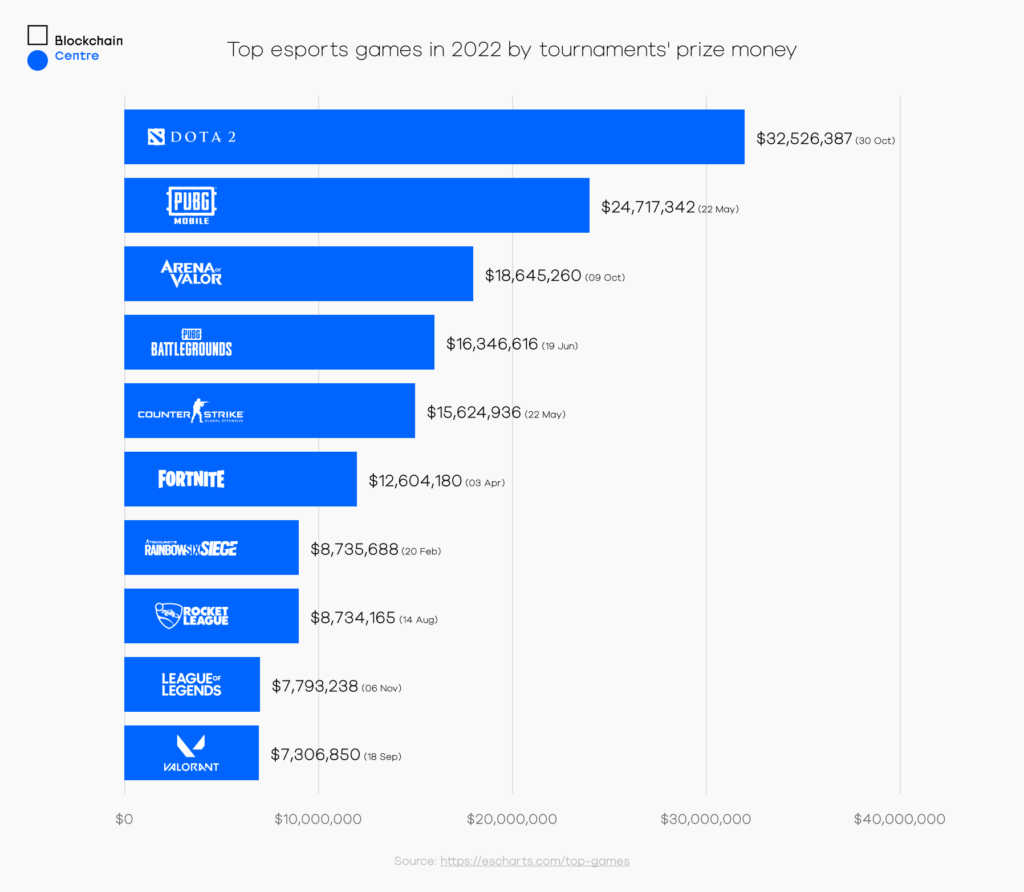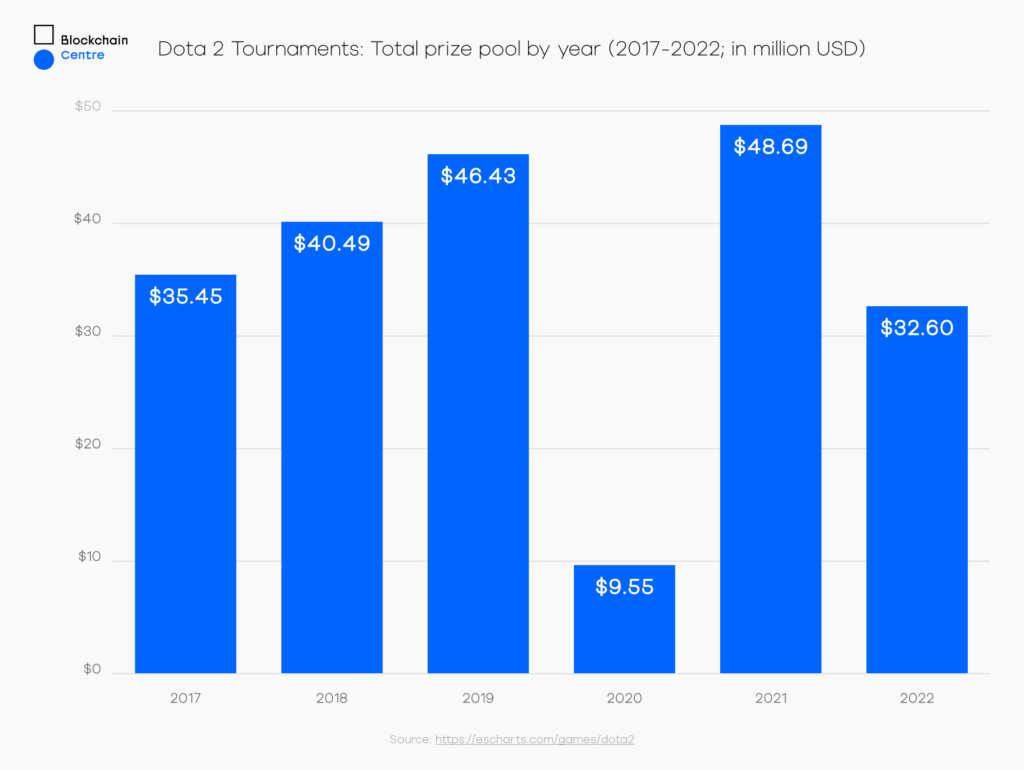eSports, or competitive video gaming, has been on the rise in popularity in recent years, with millions of fans tuning in to watch their favourite players compete. Once considered a niche activity, eSports has now become a global phenomenon with a rapidly growing fan base, professional teams, and big-name sponsors. The industry has even earned recognition as a legitimate sport, with the International Olympic Committee considering its inclusion in the Olympics. Consequently, as the industry expands, the corresponding financial prospects also increase.
According to data acquired by Blockchain Centre, in 2022, the prize money awarded in the top 10 eSports tournaments collectively exceeded $150 million, signifying a substantial global interest in the gaming industry.
The tournament for Dota 2, a multiplayer online battle game, tops the chart with a prize pool of over $32.53 million, succeeded by PUBG Mobile with a pool of $24.72 million, and Arena of Valor falling not far behind with $18.65 million. PUBG: Battlegrounds tournament reported prize money of $16.35 million, surpassing the Counter-Strike: Global Offensive prize pool of $15.62 million.


While the prize pool for the largest eSports tournament, Dota 2, in 2022 was somewhat lower, with $32.6 million compared to the pool of $48.69 million in 2021, the overall tendency over the years shows a steady increase. The prize pool for the tournament has grown from $35.45 million in 2017 to almost $40.49 million the following year, and $46.43 million in 2019, increasing yearly to $48.69 million in 2021.
Other games in the list of largest eSports tournament prize pools include games like Fortnite, awarding over $12.6 million, Tom Clancy’s Rainbow Six Siege and Rocket League, both offering similar pools of $8.73 million. The popular online multiplayer game, League of Legends, has a declared pool of almost $7.79 million, while the first-person tactical shooter game, Valorant, contributes to the collective prize pool of over $150 million with its tournament prize of $7.31 million.
Upon examining the data of the 10 largest eSports tournaments, it is clear that most tournaments were dominated by PC and console games. However, it is noteworthy that the second and third places were occupied by mobile games, demonstrating the increasing popularity of mobile gaming in the competitive arena.
In 2022, the eSports industry faced multiple challenges, including post-pandemic market corrections, resulting in cancelled events and revenue losses. Statistics show that the global eSports industry generated $1.38 billion last year, lower than expected due to the pandemic’s impact.
Furthermore, eSports professionals’ well-being and burnout were also significant concerns, with many calling for better regulations and support systems. Many professional players have cited burnout as a significant challenge.
Looking forward, industry experts predict that the eSports market will continue to grow and expand. The global eSports market is expected to reach $3.57 billion by 2027, growing by 21.3%. The rise in mobile eSports and casual gaming is also likely to contribute to this growth as younger generations, and mainstream media outlets show more interest in the industry.
Additionally, the mobile eSports segment is predicted to grow by 11.9%. There will also be a continued focus on player welfare and mental health, with organizations and governing bodies working to create supportive environments for eSports professionals.
As the industry continues to evolve and expand, it will be interesting to see which platforms and games will continue to rise to the top of the prize money leaderboard.







